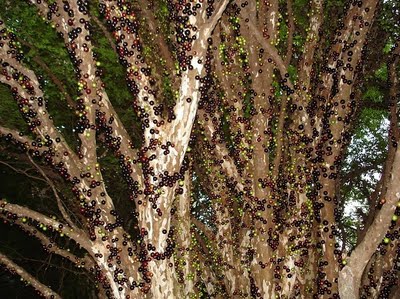The Tree that Fruits on its Trunk
Myrciaria cauliflora (JABOTICABA)
Jaboticaba is a beautiful, and strange fruit tree, which despite being from Brazil, is amazingly cold tolerant. The delicious fruit has a short shelf life, making it a poor choice as an orchard crop, but they are excellently suited as a dooryard fruit. Many different species of trees in the genus Myrciaria are referred to as jaboticaba in Brazil, but the species most commonly grown outside of Brazil is M. cauliflora.
The word "jaboticaba" is said to have been derived from the Tupi term, jabotim, for turtle, and means "like turtle fat", presumably referring to the fruit pulp.
Jaboticaba trees are notorious for taking many years to begin producing. Growth is so slow that a seedling may take 3 years to reach 18 in (45 cm) in height. However, a seedling tree in sand at Orlando, Florida, was 15 ft (4.5 m) high when 10 years old. Others on limestone at the United States Department of Agriculture's Subtropical Horticulture Research Unit were shrubby and only 5 to 6 ft (1.5-1.8 m) high when 10 and 11 years old. Seedlings may not bear fruit until 8 to 15 years of age, though one seedling selection flowered in 4 to 5 years. Grafted trees have fruited in 7 years. One planted near Bradenton, Florida, in bagasse-enriched soil started bearing the 6th year. The fruit develops quickly, in 1 to 3 months, after flowering.
The flowers themselves appear on the tree at most twice a year –naturally. They look like some strange alien creature that has deposited itself on the trunk and branches. The habit of flowers doing this makes them cauliflorous. Instead of growing new shoots these plants flower direct from the woody trunk or stem. You might ask why it is this way. The simple answer is that it has evolved in this manner so that animals that cannot climb very high can reach it, eat it and then expel the seeds away from the parent tree to further propagate the species.





No comments:
Post a Comment